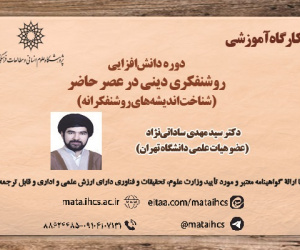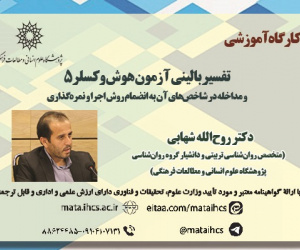تحلیل مبنای تفسیر تعبدی در فقه با تاکید بر دیدگاه حضرت آیت الله العظمی خامنه ای (مدظله العالی) درباره آیه 101 سوره نساء و مقایسه با سایر مفسران (مقاله علمی وزارت علوم)
درجه علمی: نشریه علمی (وزارت علوم)
آرشیو
چکیده
یکی از مسائل موردبحث در علم فقه جایگاه احادیث تفسیری در مقام دلالت آیات الاحکام بر احکام شرعی است. نوع فقها تنها استظهار نوعی خویش از آیات الاحکام را دارای حجیت دانسته و به عنوان دلیل استفاده می کنند. در این میان اگر روایتی در تفسیر آیات در مقام بیان حکم شرعی و تفسیر آیه موردنظر آمده باشد، به صورت مستقل به عنوان دلیل از سنت مورد استفاده قرار می گیرد و دلیل بر حکم در این صورت دیگر از کتاب نبوده؛ بلکه از سنت می باشد. در این مقاله با استفاده از روش جمع آوری اطلاعات کتابخانه ای نظرات فقها و مفسرین در ذیل آیه 101 سوره نساء که یکی از آیات الاحکام موردبحث است که روایت مفسر آن حکم شرعی است و خود به تنهایی دلالت بر حکم موردنظر ندارد جمع آوری شد و سپس با روش پردازش توصیفی تحلیلی اطلاعات به دست آمده با نظر آیت الله خامنه ای به مقایسه گذاشته، و نظریه بدیع ایشان مبنی بر قرینه متصله بودن روایات تفسیری یا به عبارت دیگر بهره مندی از تفسیر تعبدی آیات الاحکام مطرح گردید و در اثبات این نظریه به استدلال های لازم پرداخته شد.Comparative-Analytical Study: Basis of Ta’abbudi Interpretation in Fiqh with Emphasis on Ayatollah Khamenei’s Opinion on Surah An-Nisa, Verse 101
One of the debated issues in Islamic jurisprudence (Fiqh) is the status of interpretive hadiths in the applicability of Ayāt al-aḥkām (a list of Quranic verses from which practical rulings of the Shari'a (or jurisprudential rulings) can be gleaned) to Shar’i rulings. Traditional jurists have only considered their own interpretations of Quranic verses as authoritative and have used them as evidence. However, suppose a hadith interprets a Quranic verse to convey a specific ruling, and the verse itself does not explicitly state this ruling. In that case, the hadith is used as an independent piece of evidence derived from the Sunnah (Prophet's traditions), rather than the Quran. This study employs a library-based research method to analyze the views of jurists and exegetes (Quranic commentators) on Surah An-Nisa, verse 101. This verse, with its debated legal ruling, serves as a case study for the concept of Ta’abbudi interpretation. The collected data is then comparatively analyzed through the lens of Ayatollah Khamenei's perspective. The article introduces and defends the Leader's novel theory of "correlation between interpretive hadiths," which aligns with the concept of Ta’abbudi interpretation of Quranic verses. This approach emphasizes the importance of interpretations by religious authorities when the meaning and legal implications of a verse are not immediately clear.







